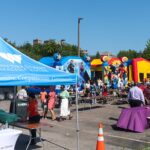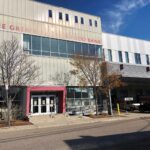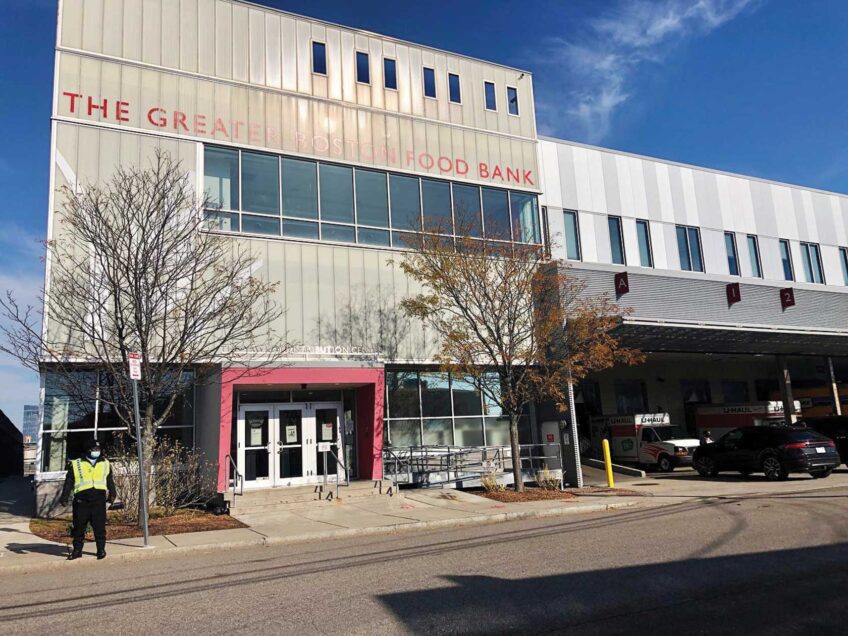As the country celebrated Martin Luther King Jr. Day this week, many of the monuments to his legacy — the nearly 900 streets across the country that bear his name — are plagued by the same racial and socioeconomic injustices that he once fought against.
For Daniel D’Oca, a design critic in urban planning at Harvard’s Graduate School of Design, this contradiction became a way to teach students about race, space and power — and to inspire solutions for restoring Dr. King’s vision on these streets.
So D’Oca, inspired by Beloved Streets of America, a St. Louis-based initiative that restores streets named after Dr. King across America, designed a studio course at Harvard that had students investigate King Streets and develop projects, using urban planning and design, architecture and landscape architecture, to help revitalize them.
“What we see is the product of design — these streets aren’t a mistake,” said D’Oca. “There were racist policies employed throughout the 20th century that you can look at to explain why these streets look the way they do.”
Street symbolism
D’Oca pointed out that the stereotype of Martin Luther King Jr. Streets — that they’re all filled with poverty and violence — hides their real-life diversity.
“There’s a famous Chris Rock joke that if you ever find yourself on an MLK Street — run,” D’Oca said, paraphrasing the comedian. “The guy stood for non-violence, and now the streets are violent. I think that’s the popular perception. And there’s certainly some truth to that — a lot of these streets do run through neighborhoods that have seen divestment over the years — but it’s not entirely true.”
“They come in all shapes and sizes,” he went on. “Some are really big and go through suburban strip malls, some of them are really commercial, some are more residential, and some go through government areas.”
So the first assignment D’Oca gave his students was to create an atlas of King Streets in major cities across the country by collecting demographic and economic data, as well as identifying what is unique to each street.
What these streets have in common is that the problems they face are no accident.
Design equity
“Most of them are in black communities and through the structural racism that pervades the built in environment in the United States, these neighborhoods and streets were created to fail in a lot of ways,” D’Oca said of policies such as redlining, racially restrictive covenants and urban renewal. “There’s no lack of evidence that there were human-made tools and decisions that led to the kind of outcomes that we see today.”
The course’s main assignment tasked students with focusing on one of two King Streets — either in Washington, DC or St. Louis — and developing a project that would address the local needs of that neighborhood.
To understand what those local needs were D’Oca took the students on field trips to both cities so they could meet with community members and government officials. They found that while the primary concern in Washington, DC, was gentrification, the big problem in St. Louis was empty lots, crumbling infrastructure and businesses fleeing.
Some of the final projects included building plans for a vocational school and community center, creating an urban forest on empty lots, and transforming all of Martin Luther King Jr. Avenue in Washington, DC, into a monument, so that walking along the street would tell the life story of the Civil Rights hero.
Dana McKinney, an architecture and urban planning graduate student at Harvard and the teaching assistant for the course, said the projects taught students about equity in design.
“Everyone should be eligible to have a strong aesthetic,” she said. “You don’t need to be a billionaire, the top one percent, to have beautiful places. Teaching students that this is something that everyone should have access to was a powerful lesson.”
But, McKinney explained, this topic isn’t commonly taught at the school—or in the field.
“There haven’t been many design studios, at least not during my time, that talk about these issues of equity and bringing justice and legacy,” she said. “And in the context of designers in general, it’s something that a lot of people disregard. So this studio was a huge statement. The students were being invited to present their work to this committee and that committee, and a lot of people were taken aback by the necessity and urgency, and the fact that the school and profession as a whole have neglected this.”
D’Oca and McKinney hope that residents and officials in St. Louis and Washington, DC will implement eventually some of the student projects.
But D’Oca said that the problems many King Streets are witness to will require a much bigger effort to solve, from better fair housing policy to the creation of good jobs nearby.
“There’s not much that a neighborhood that a Martin Luther King Jr. Street runs through can do on its own,” said D’Oca. “These are regional problems and require regional solutions. We have to address the fact that a lot of urban policy traps poor black people inside of failing cities, so we need to open up the borders in a way that leads to a more level playing field and spreads opportunities around.”





